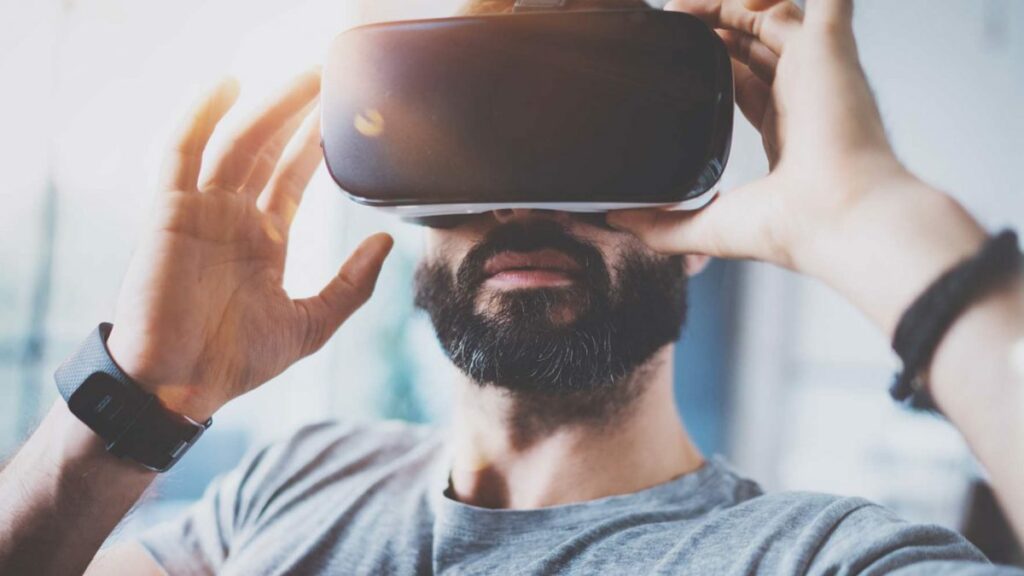Hi, this is Breean… And this is David with 360 Immersive. Join us when you want to learn more about how virtual reality is changing the way we learn and grow.
So, after we’ve worked with a customer, or a client, or a partner to create safety training content, we’ve decided on the right way to apply it, what learning objectives we would like to be able to achieve with it – how do we get that content from the screen into the hands of the adult learners, or we should say the eyes. What does that look like?
David: Well, and great question. We get that topic and that question asked a lot. It’s actually multiple answers because there’s so many ways to use this type of training content that isn’t just about one particular pathway, or one particular pipeline. And I’ll just kind of step down through it. So, once you create a series of training content, it could be VR computer simulation, it could be 360 video, it could be AR. But, let’s take it that next step now is what do you do with it? Well, first and foremost is that you need some sort of display device. Now, that could be as simple as setting up like this, and I’m viewing the content on a cellphone
Breean: Or a tablet.
David: – or a tablet, more like. In fact, if some people suffer from, in the old days before we had stabilization, and had a little bit of nausea, this was the best way to do it for them.
Breean: Just a little bit of motion sickness in that way.
David: That’s right. Now, you take a step forward of this and you pair it with a nice VR goggle, you put your phone in and suddenly you have a training tool unlike anything available today. So, what do we support? Well, right now we support iOS, we support Android. In this environment, we support Oculus Mobile. In the early days it was the Gear VR. But you can actually take a step forward and look at different types of devices that are where we’re gonna go versus where we’ve come from. And that’s in all-in-one devices.
So, it’s like a mobile environment but it’s designed for VR. It’s not designed to make calls, it’s designed specifically for VR, and it actually is less money than if I were to take a used phone and go out and purchase it and a headset, an all-in-one device like an Oculus Go, or it’s big brother, the Oculus Quest, or the Pico G2 is another great headset that we’ve been working with lately. And, you have almost all the functionality of what’s called tethered headsets, which is our next category, but there are no wires. In fact, there are no wires and it’s cost effective enough you can deploy 30 or 100. Or Walmart purchased 17,000 for its organization of the Oculus Go. So, let’s take a step forward when we’re talking about tethered units. And we’ve probably heard about the HTC Vive, the Oculus Rift. They’re great headsets. They allow you to do some things that you may not be able to do in a mobile environment. But they require a PC, or a laptop.
Breean: Right. Hence the term tethered.
David: And it’s a bunch of wires.
Breean: Yes.
David: Now, we’re moving beyond that in some ways. And the mobile all-in-ones are starting to be from a feature set, come close to the tethered headsets.
Breean: Comparable to that quality.
David: So, it’s a great time for this industry and it’s a great time to get into this industry from a hardware standpoint. But what if you don’t have anything? Well, you can take VR content, and you can deploy it on a desktop, in a WebGL. So, let’s say you have an LMS or safety management system and you have a course, and you don’t necessarily want to take a step yet to put people in a goggle. They can actually bring that content up on the screen and just like in Google Maps you can –
Breean: Navigate through that environment.
David: We call pan and scan, where you’re moving through. You can do that very same thing in that desktop within that course. So, the key takeaway is is once you create a body of content, a library, you have all of this ability to push it out in many different ways depending on the needs of your organization, which we help you figure out.
Breean: So that’s one of the needs that we help you assess is what’s gonna work best for your team, what’s gonna work best for your location, for your environment, for your budget. And, it sounds like there’s a plethora of options that are gonna make it easy to find the best fit.
David: Absolutely.
Breean: Thank you so much David. If you want to learn more about virtual reality hardware, software, safety training, anything related to immersive technology we ask you to join us next time. This has been Breean and David with 360 Immersive.


